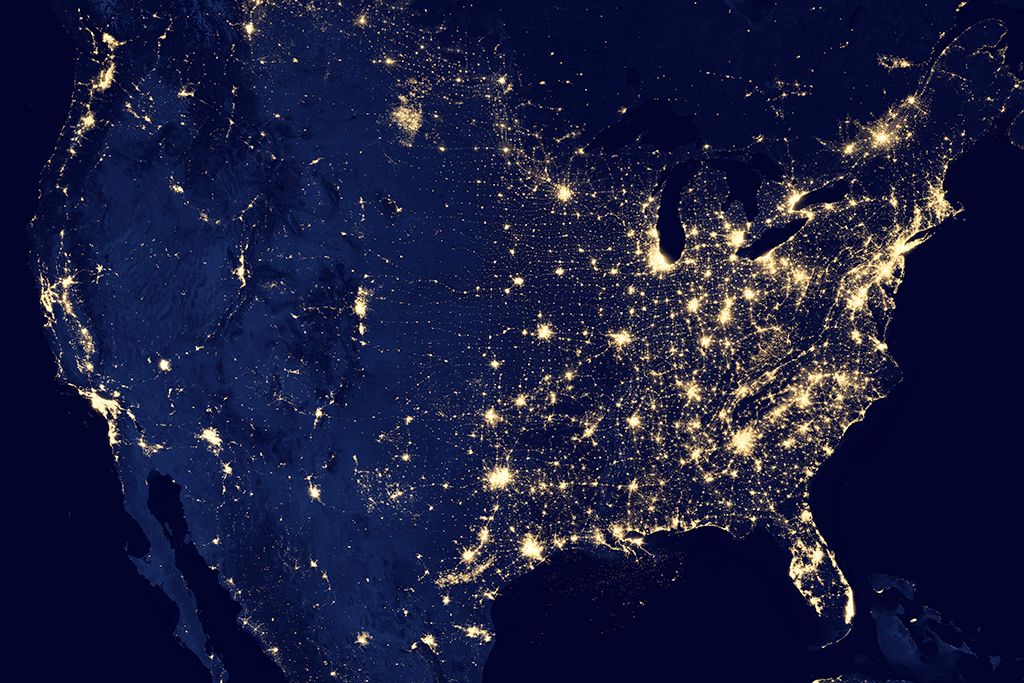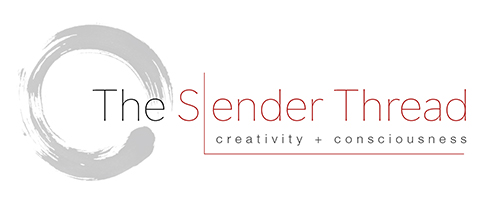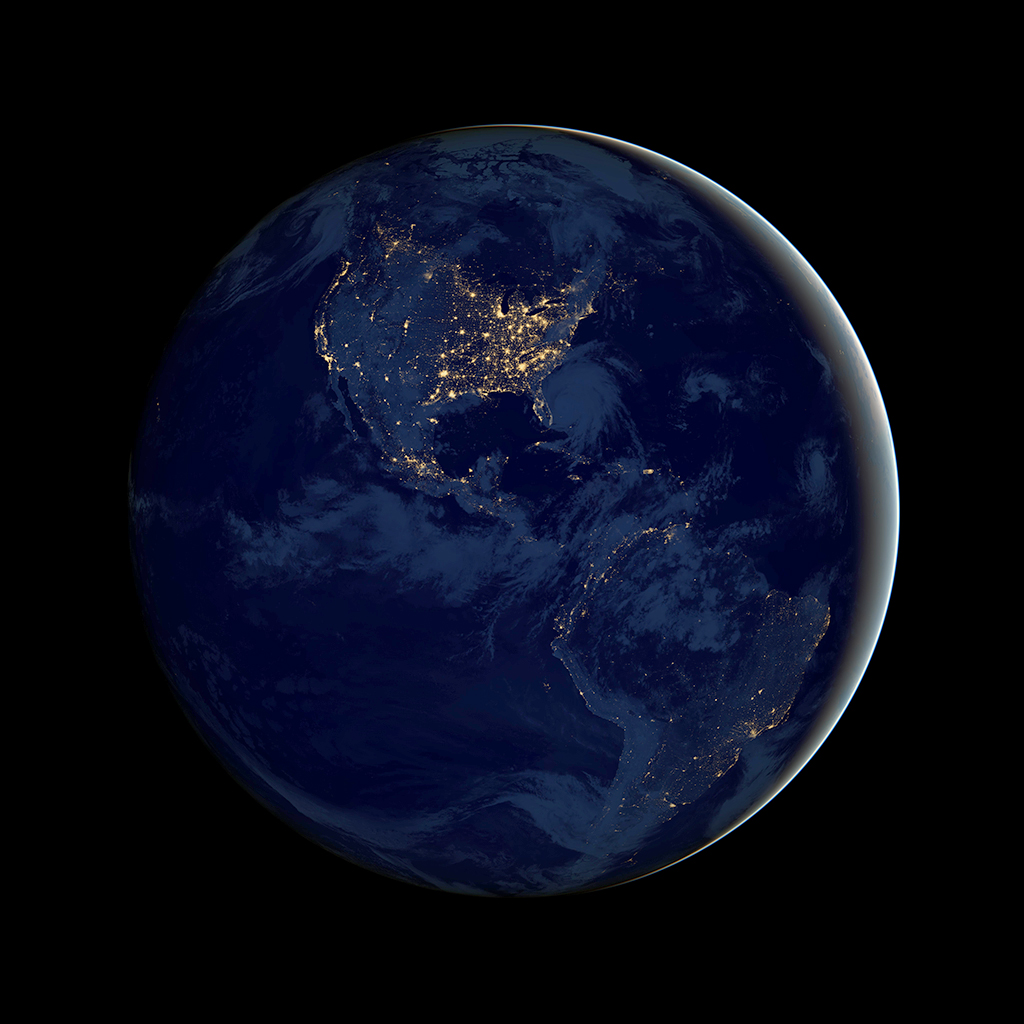Beauty and Terror
We stand among the many that have been touched by the sublime view of Black Marble Earth, created by NASA in late 2012. According to NASA, “The images were captured by the Suomi National Polar-orbiting Partnership Satellite, which made 312 passes around the Earth in order to photograph every bit of the hemisphere.” Time Magazine comments: “Strangely, the nation’s most populous city of New York shows up darker than Chicago and Atlanta in this snapshot. NASA explains that some of the images were taken during the widespread power outages caused by Hurricane Sandy in late October, leaving parts of New York and New Jersey bathed in darkness.”In art historical inquiry, what we experience as sublime is often of such great dimension that we feel small, insignificant and powerless in the face of such immensity. Joseph Crawford writes about Edmunds Burke’s influential aesthetic treatise of 1757, A Philosophical Enquiry into the Origins of Our Ideas of the Sublime and the Beautiful: “Beautiful objects, Burke contended, create feelings of pleasure and protective love in their viewers, while sublime objects inspire feelings of awe and terror.
In moments of such great and immense beauty, we find ourselves with a paradoxical response. In Black Marble Earth, we are stunned by its beauty, but outraged or “terrified” by the impact of humankind on the fragile planet, evidenced by the massive amount of electricity and light which daily consume more and more of our precious natural resources. Where are we heading, as a species, as a planet? What kind of response can we have to this image of Black Marble Earth?
In our most profound moments—of beauty and radiance, of great pain or trauma, of love and awakening, of seeing and feeling the sublime—we also sense our mortality. Everything that is born must die. All the manifestations of life that we are privileged to experience are temporal and mortal, and will pass from this earth. The Greeks have a word for this: pathos, which, in my mind, represents the duality present in rare moments of awareness when joy is intertwined with sadness, and hope is tempered by reality. Pathos, I believe, is seen in many works of art where we feel simultaneously a living, radiant presence combined with a recognition of the sometimes painfully acknowledged facts of our existence. Indeed, I feel that in many of the greatest works we find a search for wholeness of spirit, for redemption, and for eternal values expressed through the transitory moments and ephemeral circumstances of our lives. Beethoven’s Ninth Symphony, written when he was nearly deaf, the later works of Edward Weston from Point Lobos, photographed after learning that he had Parkinson’s disease, Rilke’s later work, the Sonnets to Orpheus and the Duino Elegies, all contain this admixture of joy and sadness, this tempering of darkness with transcendent light, and express in Theodore Roethke’s words “The intolerable sadness that comes when we are aware at last of our own destiny.”
Whatever Roethke may be referring to in his personal destiny, we cannot know. But it is in our lot as human beings to maintain this tenuous balance between the unrestrained joy of being alive, with the absolute certainty that we, like all things, will someday die—and that our lives on this planet are temporal and short.
This quality of pathos is, I would imagine, the source of the phrases: struck by awe or wounded by beauty. Awakening exacts a price, and real seeing acknowledges both: the life force present in all things and the concrete realities of living and dying. It acknowledges our highest and best possibilities as well as our most conflicting elements and greatest obstacles.
Seeing, feeling, and deeply engaging the mysteries of the world brings us closer to the joy of consciousness. Seeing and feeling the contradictions within ourselves and witnessing those very same contradictions reflected in the world itself brings us closer to the sorrow of conscience.
It is important to keep in mind at every turn that we are microcosms of the larger universe. Everything we observe in the world, everything we react to, and everything we see externally also exists within us—our culture is nothing more than a reflection of our collective state of being. And everything we observe in ourselves, our contradictions as well as our potential unity, is manifested in the world itself. If we wish to affect a change in the world, to make sense out of the fractured conditions of our collective existence, we must begin with ourselves. If we wish to awaken from the dream that we are, we must refine and transform our experience, and strive toward a state of inner unity and wholeness of being.
Robert Adams, photographer and eloquent spokesperson for the integrity and ethical responsibility of the artist, writes: photography ought to start with and remain faithful to the appearance of the world, and in so doing record contradictions. The greatest pictures would then—I still believe this—find wholeness in the torn world.
As defined by hundreds of years of practice— I think this history is vitally important—art is a discovery of harmony, a vision of disparities reconciled, of shape beneath confusion. Art does not deny that evil is real, but it places evil in a context that implies an affirmation; the structure of the picture, which is a metaphor for the structure of Creation, suggests that evil is not final.
… Art does not in fact prove anything. What it does do is record one of those brief times, such as we have and then each forget, when we are allowed to understand that the Creation is whole.
In Conversations Before the End of Time, art critic Suzi Gablick writes in response to a question whether art and artists could help turn around some of the apocalyptic conditions in the world today: At this point I am unclear as to what can and cannot be turned around. I do think that living in the reality and truth of our situation is one small step towards mastery of it… Living in the truth of our situation is related, I believe, to really contacting the grief that one would feel at the loss of this beautiful life that we have here on this planet, or the inability of the human race to sustain itself. Somehow or another, this grief has to be experienced fully, devastatingly, before we will start making the necessary changes…
It seems as if there is a spiritual and social obligation to participate in this process of healing our world, however one can.
If our age is to be healed, we must heal ourselves. It is not enough to simply work through our residual problems, what our mothers or fathers may or may not have done to us when we were young. We must come to know ourselves fully: our strengths, weaknesses, potentials, and our life’s purpose. And we must know ourselves in context, with others, in a culture, and on earth with six billion other beings. In short, the search for consciousness forms the foundation of our discovery of the role we are called to play in the drama of life and guides our enactment of it.
We have within us an inner measure of integrity. When we step off the bridge of alignment with our true Selves and enter into a situation not becoming, in the words of the I Ching, of a “superior” man or woman, we feel remorse of conscience. And this sorrow, this care for ourselves, can eventually create an inner fusion, a solidifying that leads toward a wholeness of being containing hints of the joy and liberation of consciousness. When we see and feel that we are not whole and indivisible, we are on the path of becoming. Like a clay pot, we are fired in the kiln of suffering our inconsistencies and our many conflicting selves into a new level of integration
This magnificent view of planet earth as one integrated whole—our blue planet—the realization of this vision of connectedness will only be possible for humanity when the search for wholeness, for integration, and for a connection to the deeper voices takes place in each and every one of us individually. There is nothing, at the moment, that can we do in the face of such beauty—and in witnessing such terror as we may find in civilization’s energy drain. What we can do, what is a “proper” response to Black Marble Earth is merely to take it in, allow the image to penetrate into our deepest consciousness, and allow it to gestate—beautifully and uncomfortably—within us. Action can only arise naturally through the depth of our caring, through the power of the image as we allow it to gradually and fully act on the core of our inner being.
For me the world is weird because it is stupendous, awesome, mysterious, unfathomable; my interest has been to convince you that you must assume responsibility for being here, in this marvelous desert, in this marvelous time. I wanted to convince you that you must learn to make every act count, since you are going to be here for only a short while; in fact, too short for witnessing all the marvels of it.
—Don Juan, as told by Carlos Castaneda

